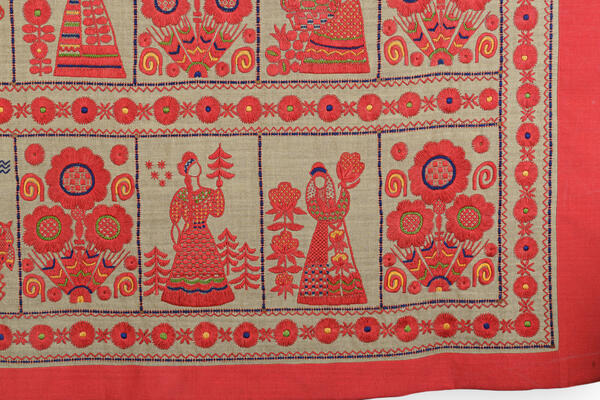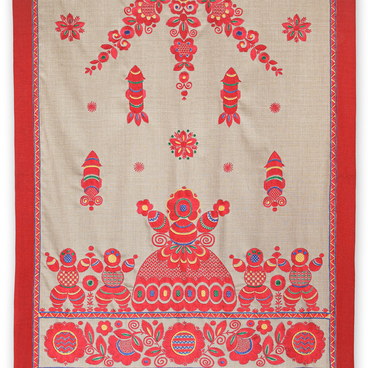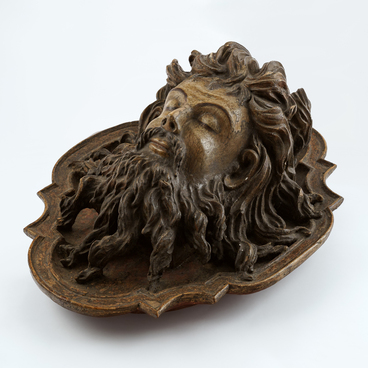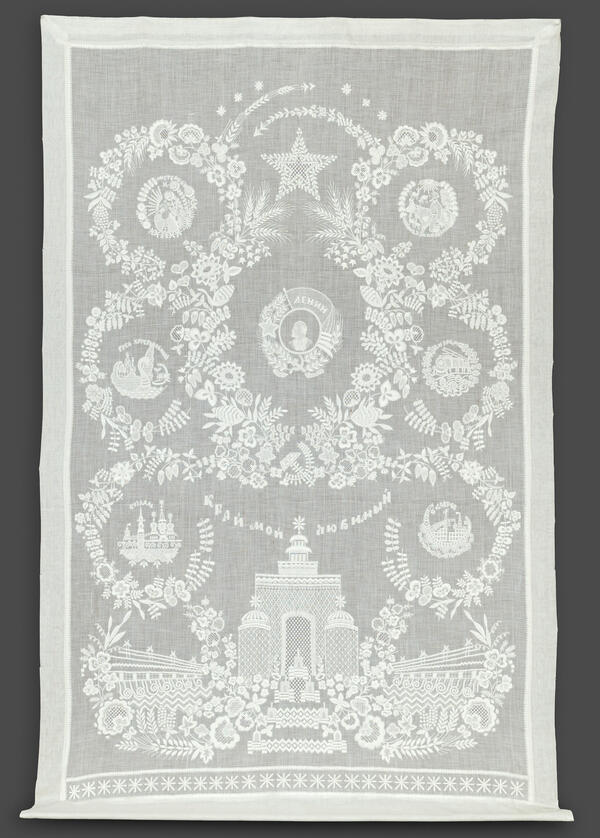Mstyora embroidery is a traditional Russian craft. Its history dates back several centuries. The foundation of Mstyora embroidery was laid by the nuns of the convent in the name of St. John the Merciful in the 18th century. They decorated clerical garments, church items, shrouds and icons with gold and silver embroidery.
Satin, velvet, leather and silk were used for gold and pearl embroidery. Gradually, traditional patterns were formed and color combinations and various embroidery techniques were developed. Craftswomen passed on their experience and knowledge from generation to generation. The works of embroiderers from Vladimir were distinguished by meticulous execution and artistic expressiveness.
It is believed that it was in Mstyora that a type of satin stitch was developed, known as the “Vladimir stitch” (or “Vladimir topstitch”). Since the 1940s, Vladimir stitch has been used for many different products of the Mstyora Embroidery Factory. This embroidery method consists in covering the front side of the fabric with large bright decorative stitches. With this method, small stitches along the edge of the pattern are made on the wrong side of the piece. Almost the entire pattern is made with red thread, while blue, green and yellow threads are added for certain parts.
Hand embroidery is often complemented with elegant square patterns and various stitches: the middle part of large motifs is filled with decorative stitches that form small geometric patterns consisting of triangles, checkers, cells, and zigzags.
The drawing for the panel “The Peoples’ Friendship” was created by Tatyana Mefodievna Dmitriyeva-Shulpina. The artist developed drawings for machine-embroidered items at the Nadezhda Konstantinovna Krupskaya Sewing Factory. The background fabric is wool. The panel was embroidered with floss threads by Taisiya Stepanovna Voronina and Valentina Grigoryevna Zhivaryova.
Dmitriyeva-Shulpina designed this composition to
commemorate the 50th anniversary of the formation of the USSR. The
work consists of 27 scenes (nine scenes in each row), separated by lines of
drawn threadwork. In each row there are five figures of girls in national
costumes, symbolizing 15 sister republics, and four bouquets of stylized ears
of wheat and flowers. Between the rows and along the edge, the composition is
decorated with an ornamental strip of daisies and stars. A piece of red fabric
frames the panel along the edge.







